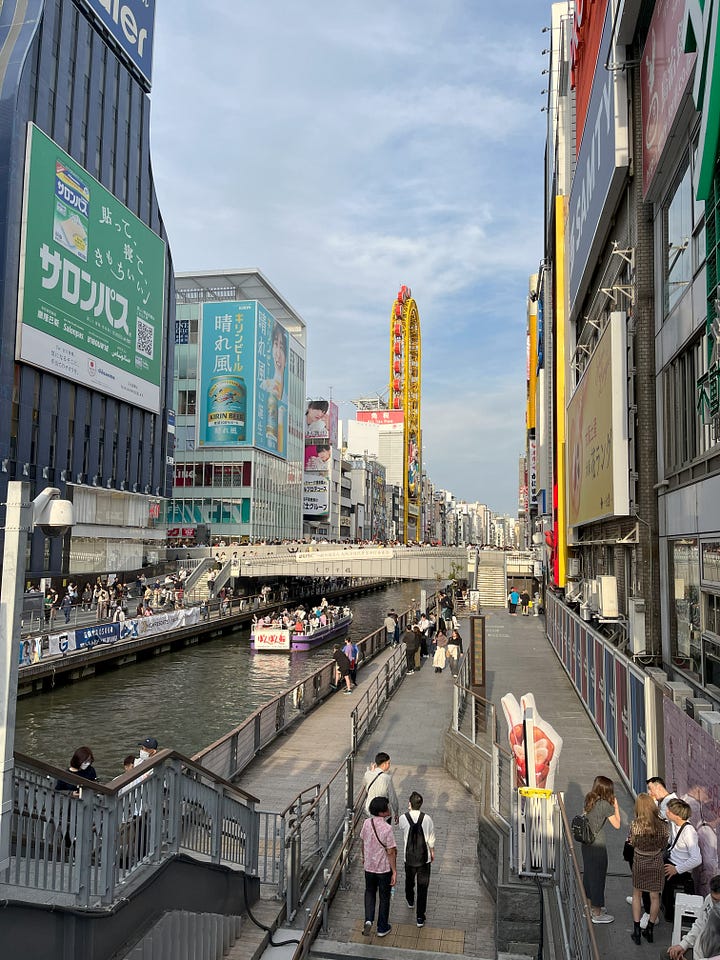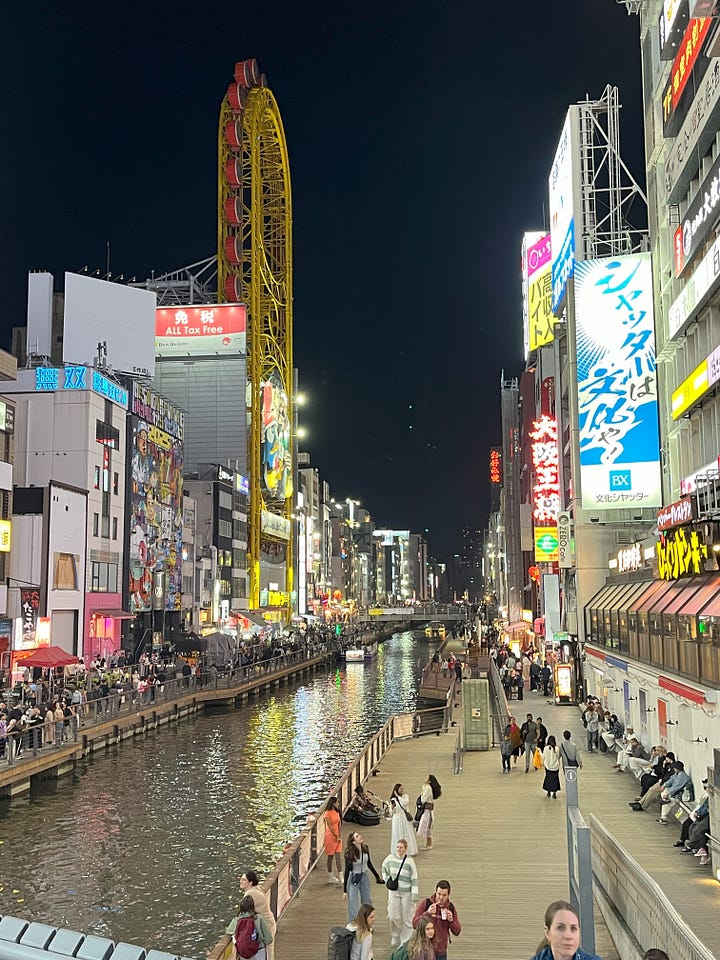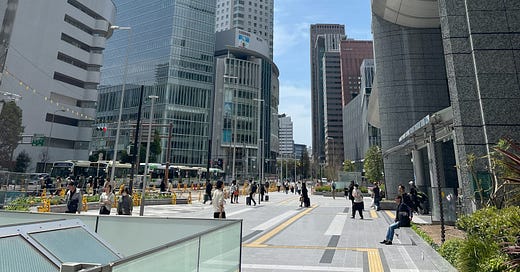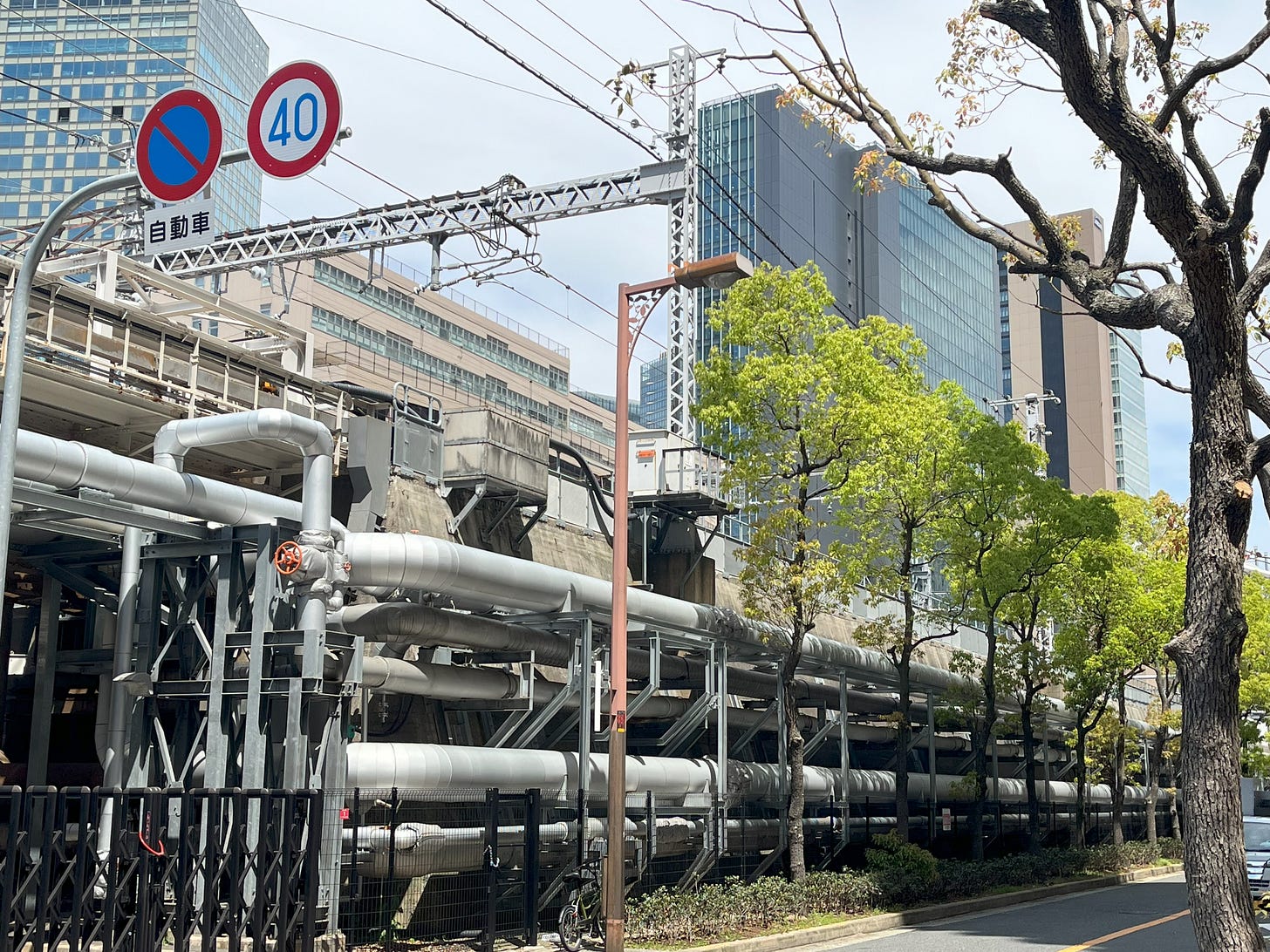A short break from the Kinki Nature Trail this week. I had to go to Osaka, so while I was there, I walked the western half of the Loop Line around the city, from north to south.
I walked out of Osaka Station and immediately found myself in a crowd of foreign tourists. At a taxi rank, some Indian tourists were showing the taxi rank coordinator where they wanted to go on an app, he told the driver, and the tourists piled into the taxis. Other South East Asian tourists were gathered near the entrance, checking their phones and puzzling over their next move. By the time I had reached the west exit of Osaka Station, the crowds had thinned, and I speeded up to follow the long leftwards curve of the Loop Line.
It was amazing how quickly the crowds disappeared. This would happen station after station, a buzzing rush of frustrating people, followed by peaceful streets with only the odd pedestrian.
The camphor trees that lined the road had fresh green leaves, last year’s orange remnants were blowing off in the spring breeze. This wasn’t the only orange that had been shed. The Osaka Loop Line’s distinctive orange trains had been solid orange when I lived here ten years ago. Now they were sleek, shiny silver, the orange a series of rectangles and a thin stripe down the sides.
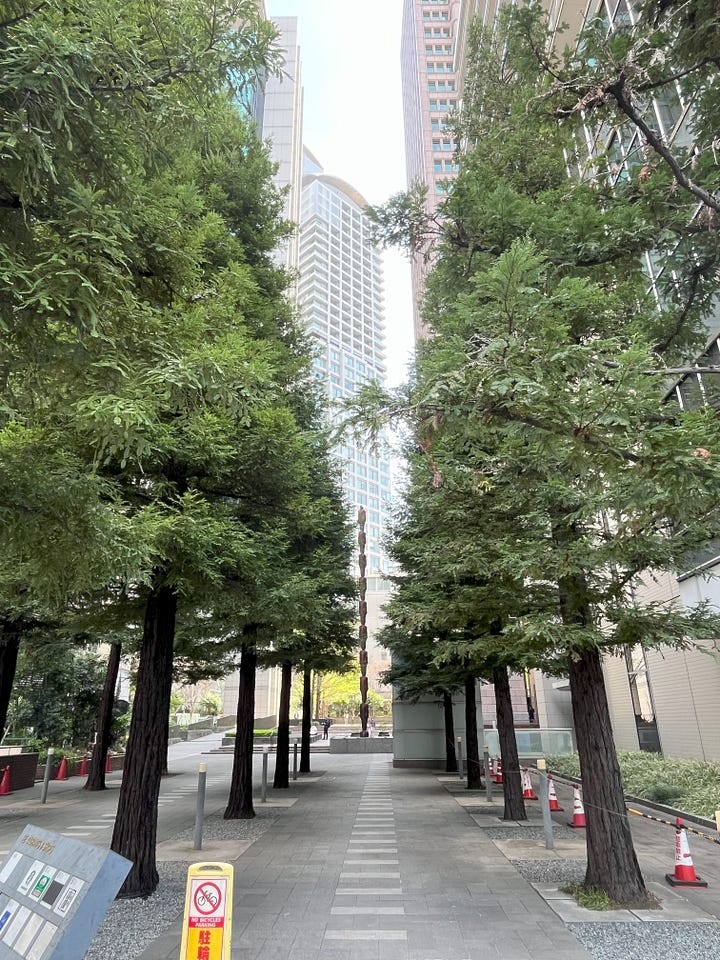
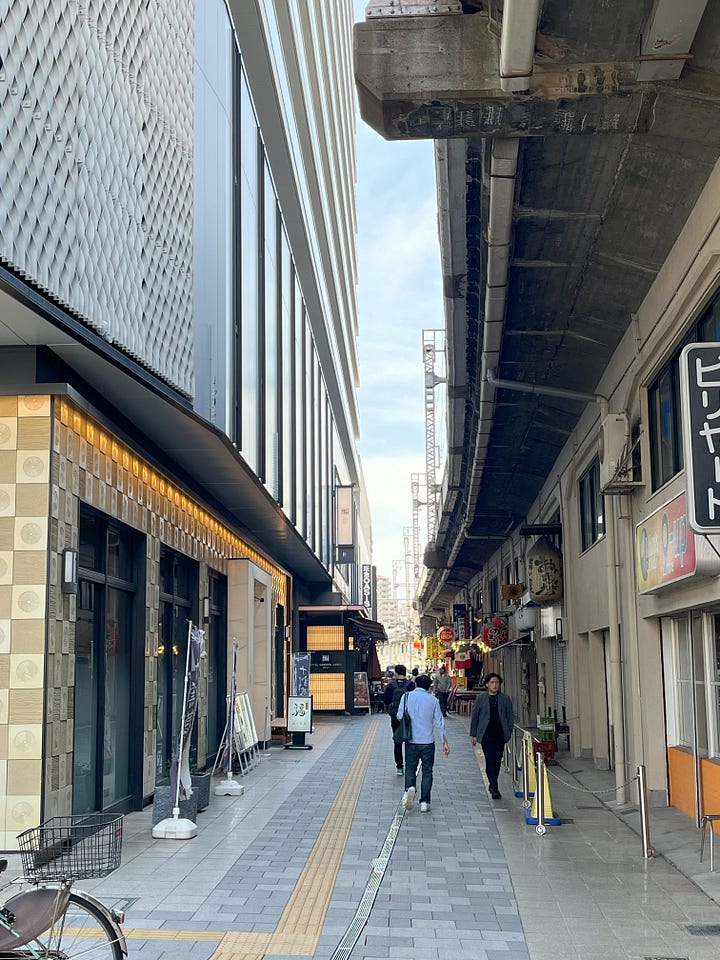
Beyond Fukushima, the next stop westwards on the Loop Line, the tower blocks disappeared, to be replaced by a mix of small shops, apartment buildings and 1960s housing plastered with Japan Communist Party posters. Sometimes, in amongst these, there was the odd pre-World War 2 house, all that remained following the fire bombings of that era.

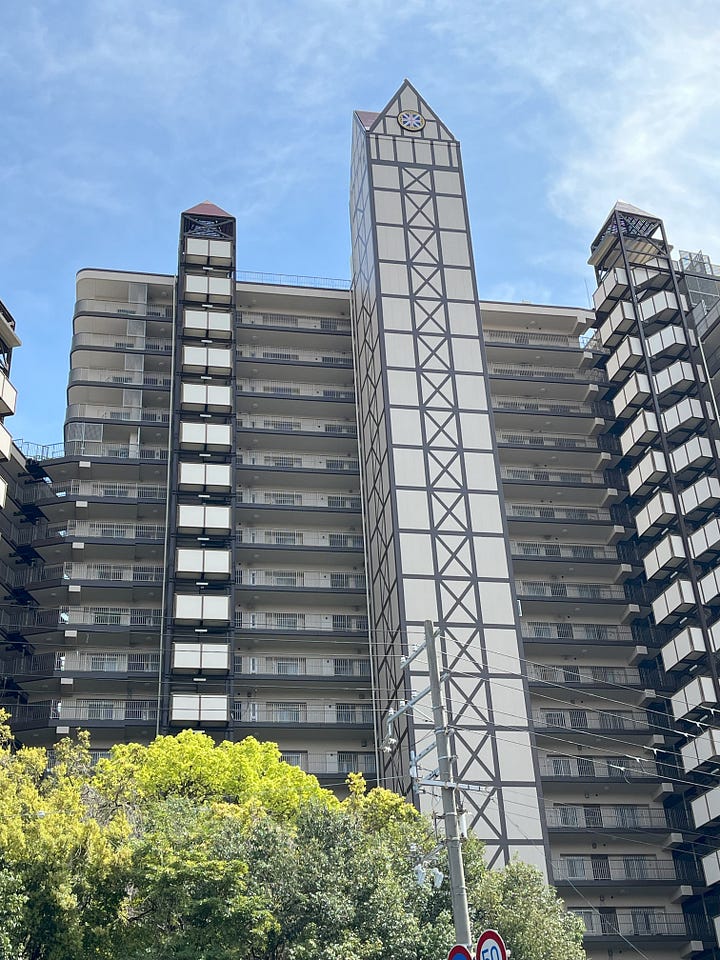
At Nishikujo I found the “Husband” darts bar. Appropriate, because if you lived round here that’s probably where you would find your husband a lot of the time. I stopped in a nearby park to eat lunch. The advantage of urban areas is that there are convenience stores everywhere. The park was beginning to explode with weeds, and a crow eyed my sandwiches hungrily.
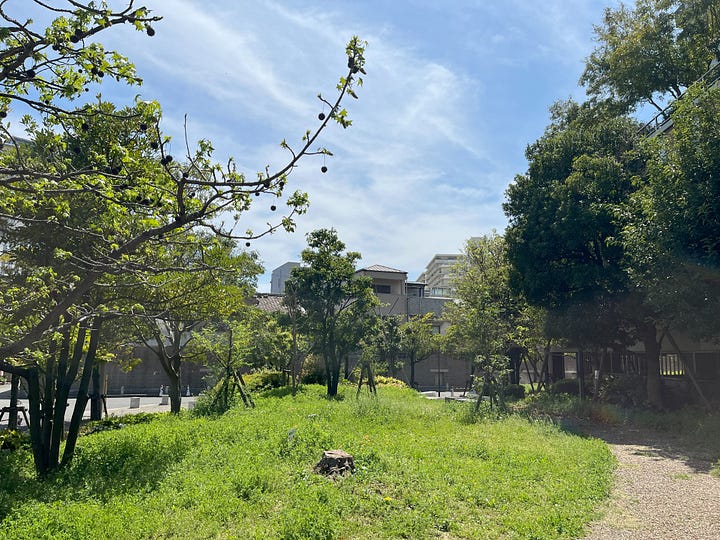
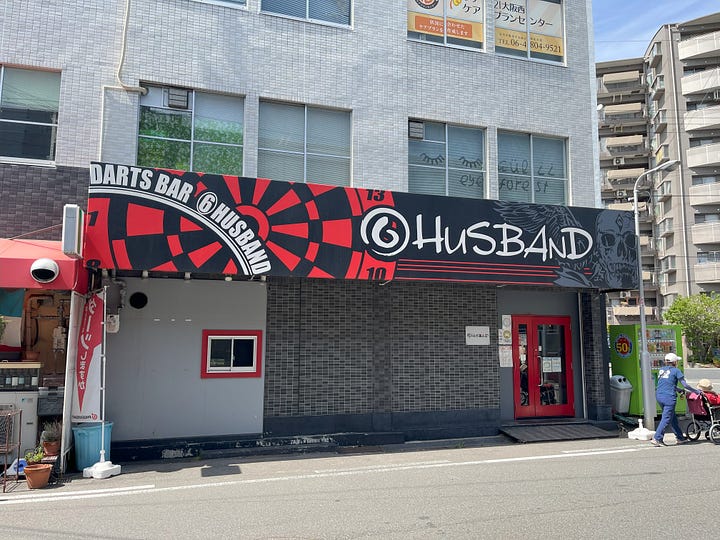
After Nishikujo, the urban landscape changed. The riverside was lined with industrial buildings, hisses of compressed air, clanks, shouts, and unidentifiable smells, not unpleasant, just unidentifiable. I wondered how to cross the Ajikawa, which empties the network of rivers and canals in the centre of Osaka out into the bay. The nearest crossable bridge seemed miles away towards the centre of Osaka. But, what was this? A tunnel under the river.
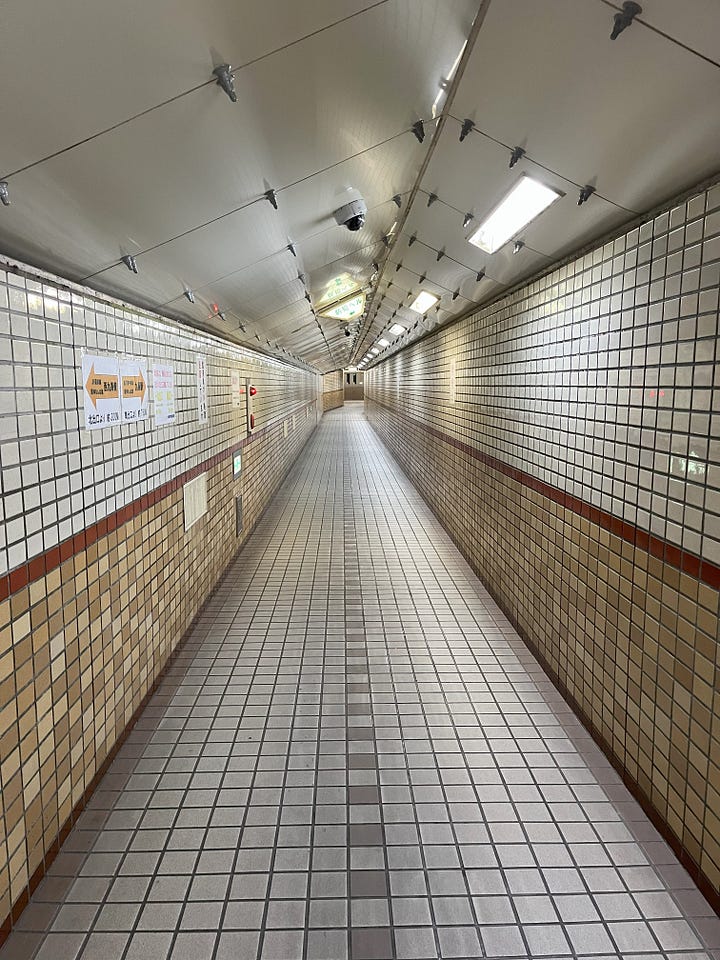
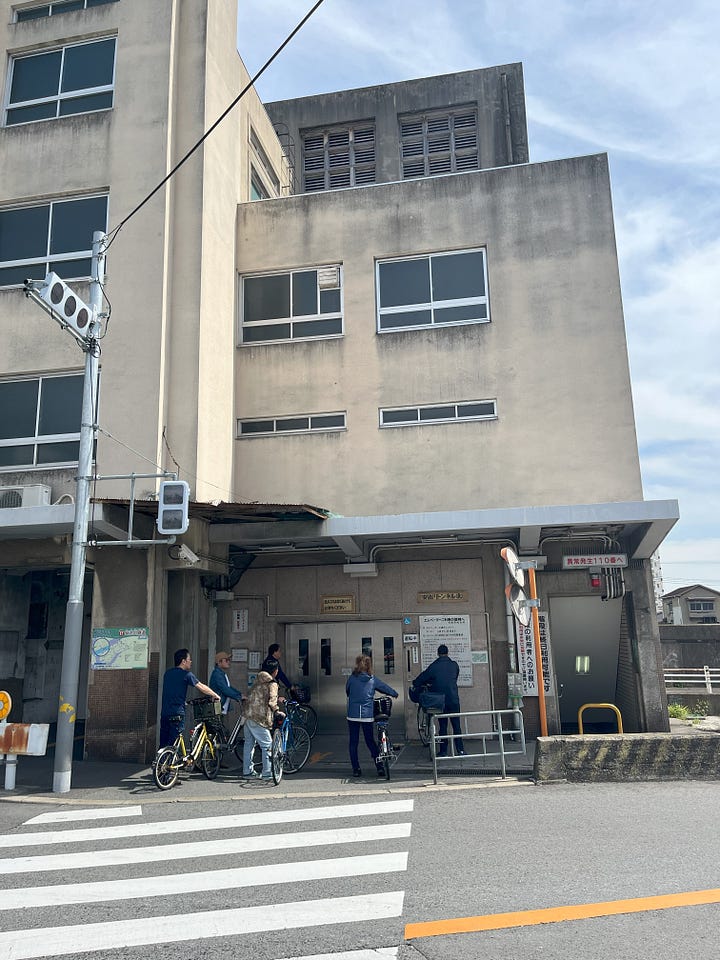
The towers of Bentencho appeared, the westernmost point on the loop line. In a park, old ladies were having a late hanami. For most of its length, the loop line is elevated, creating spaces underneath that in the UK we would call “arches”; in Japan, the spaces are cuboid, with lopped off corners at the top, filled with cafés, mini warehouses, live music venues and billiard clubs.
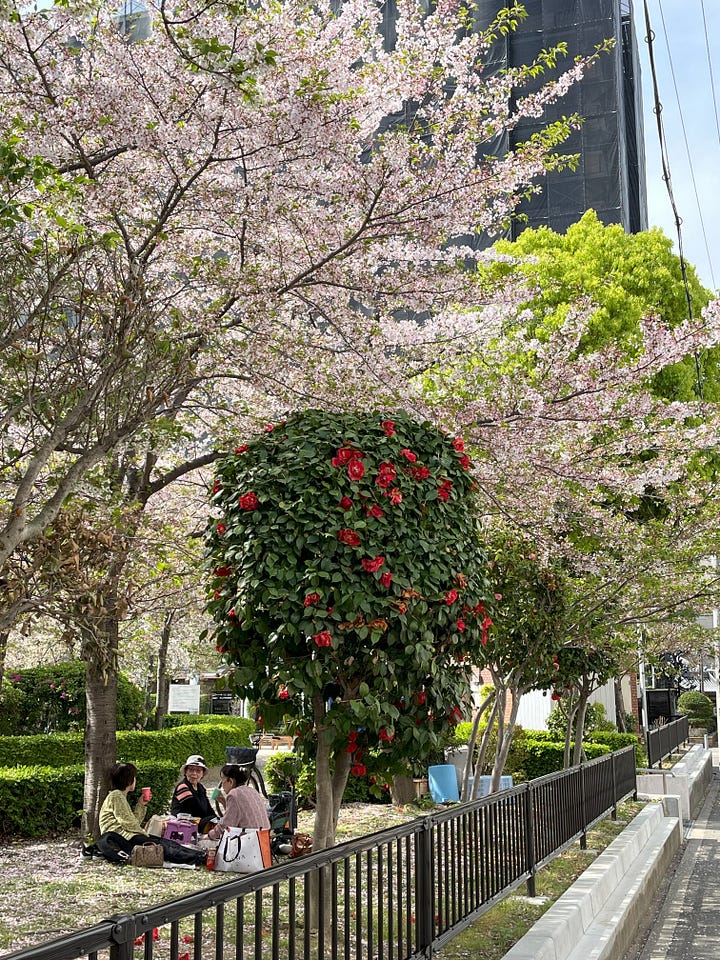
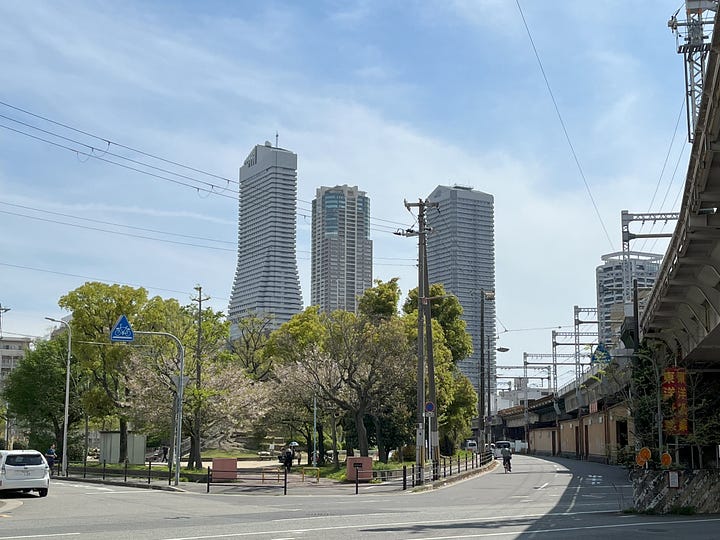
Like a distant hill, Osaka Dome concert venue appeared over roofs. Another river, this time the Shirinashi, pouring the contents of South Osaka’s canals into the bay. Less industrial than the Ajikawa, there were houseboats and cafés here. Past Taisho station, another river, the Kizu.
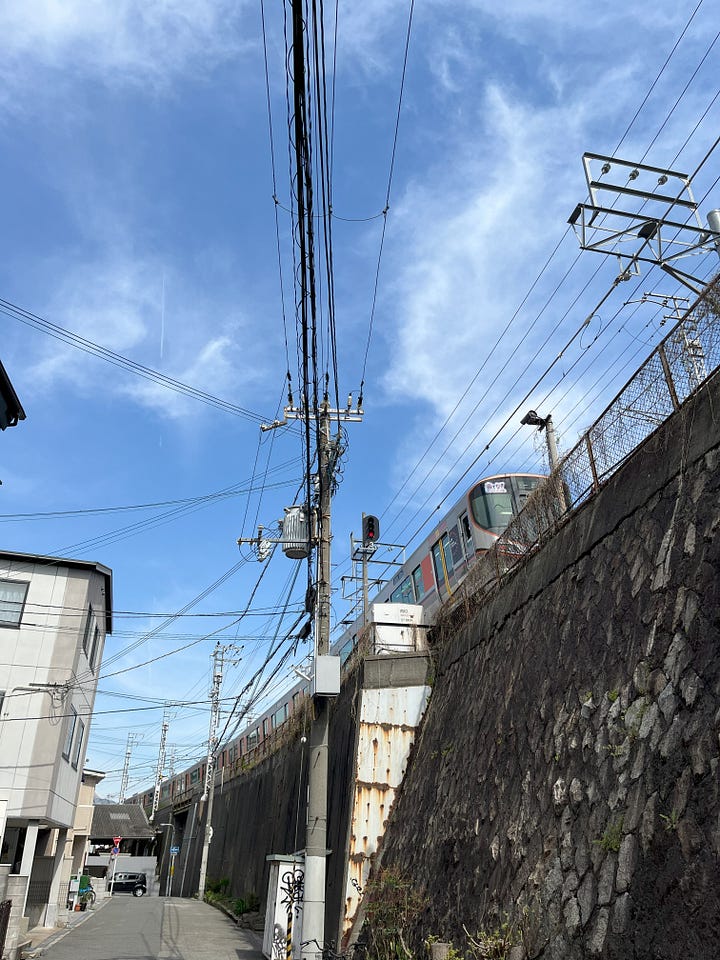
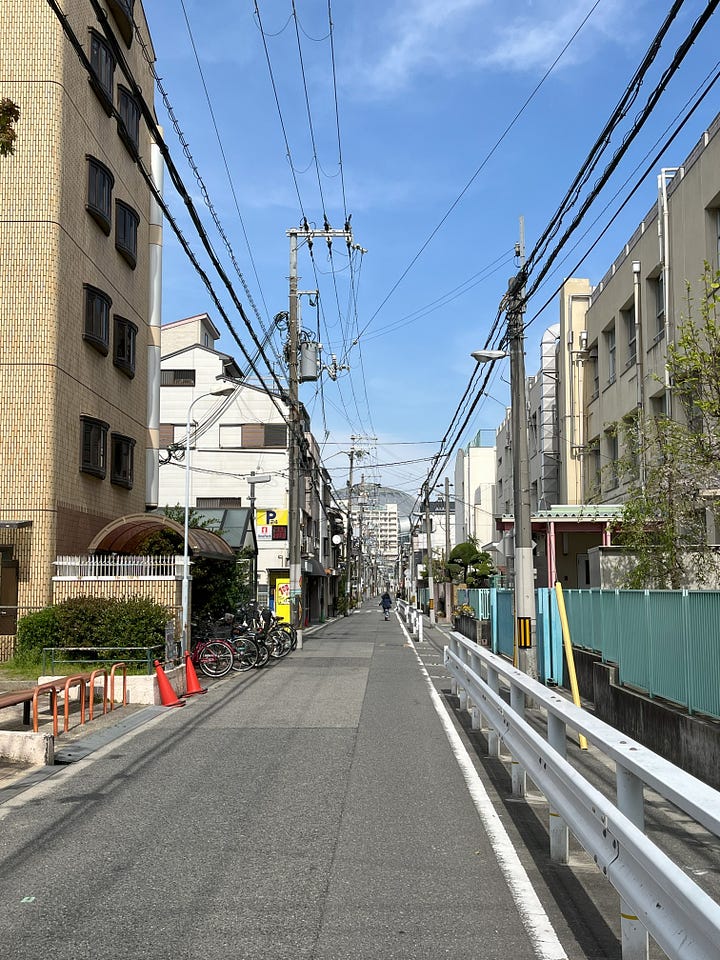
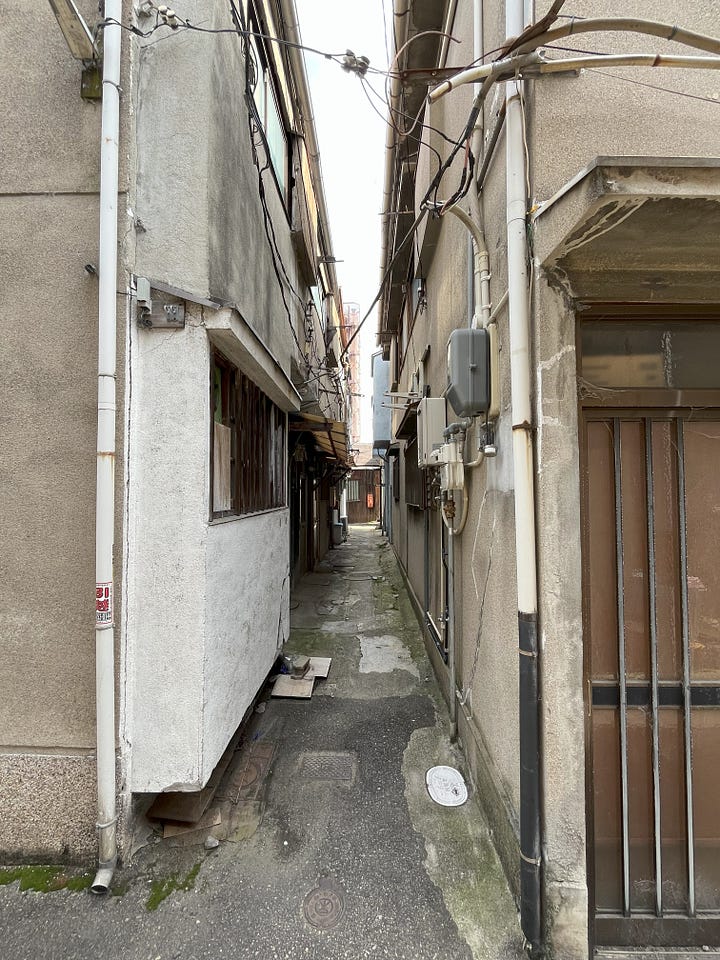
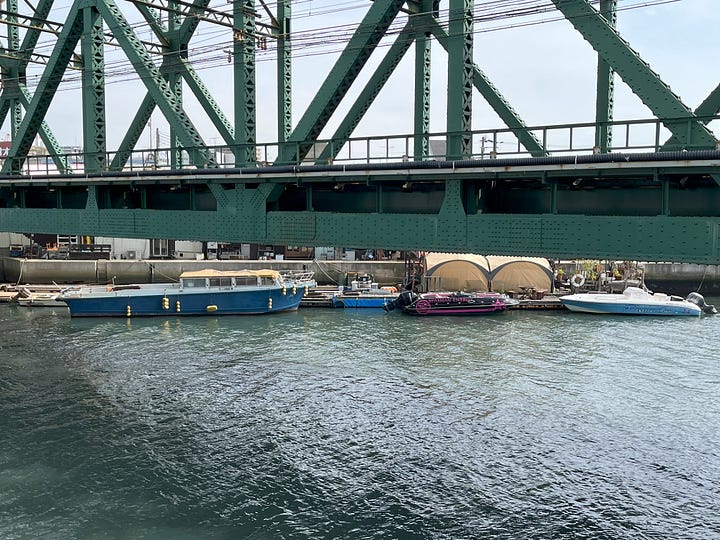
Next to the Loop Line were warrens of houses, nearly all empty, with a property management company sign on each one. Presumably, the company is buying up houses as owners move out or pass away, until they have the whole block and can redevelop it.
As I approached Imamiya and Shin-Imamiya, the end of my walk, signs of the area’s past as a haven for day-workers in the construction industry appeared. Homeless carts, a generally rougher feel. The day-worker doss-houses have mostly gone, but their spirit lives on in the cheap hostels catering to foreign backpackers.
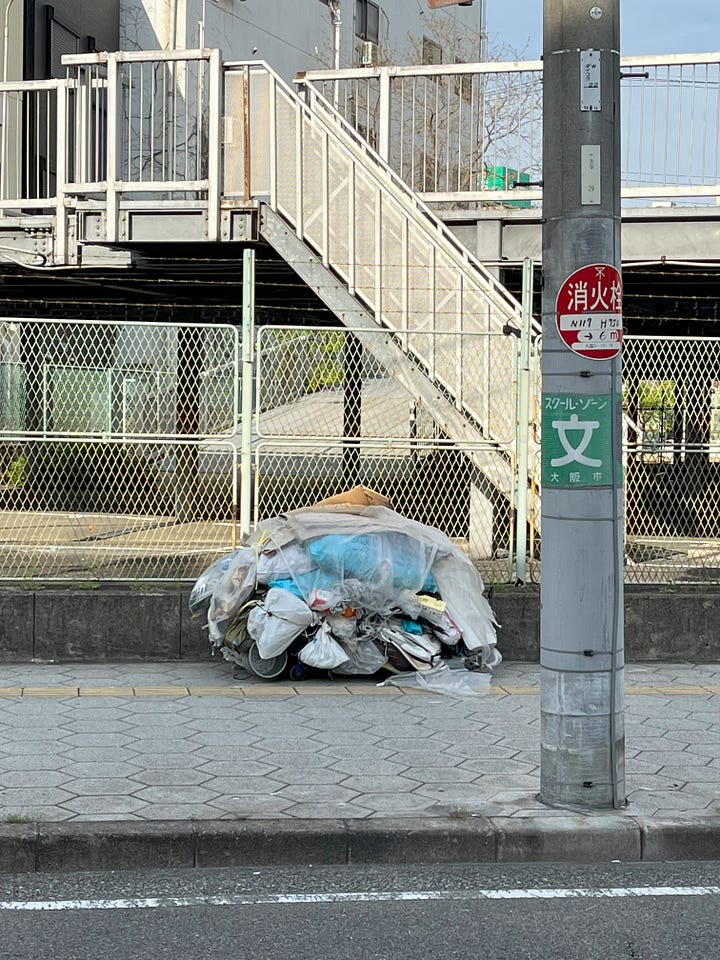
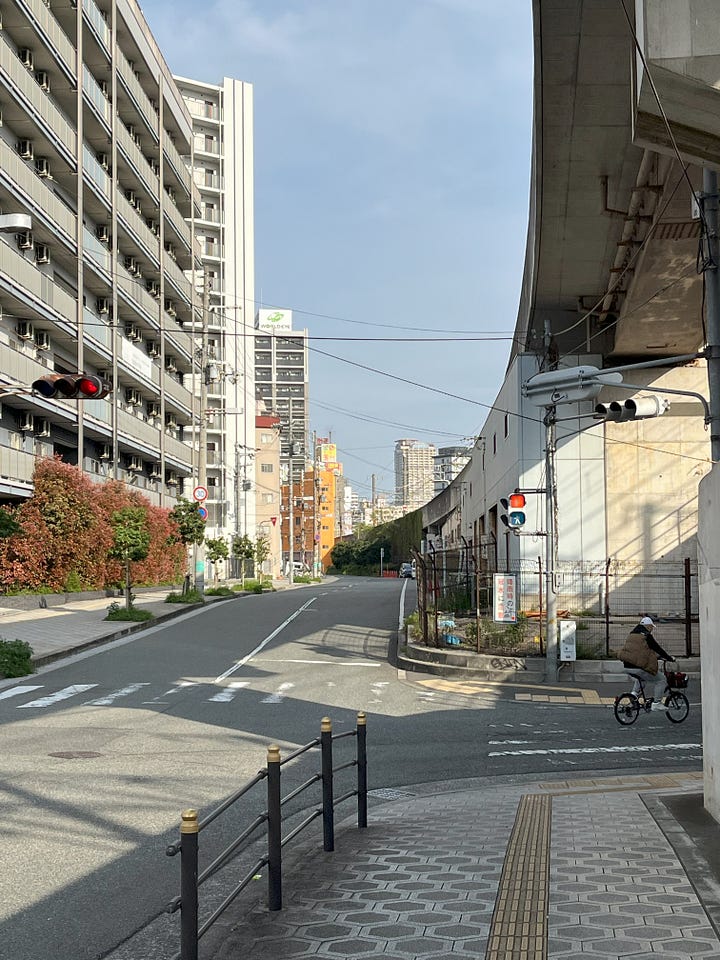
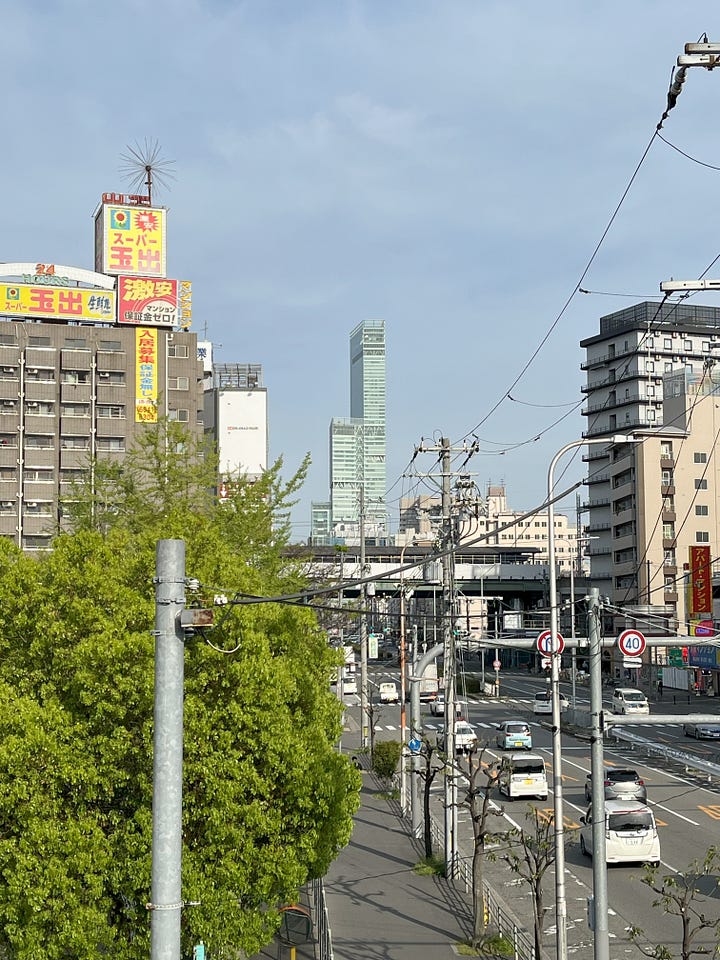
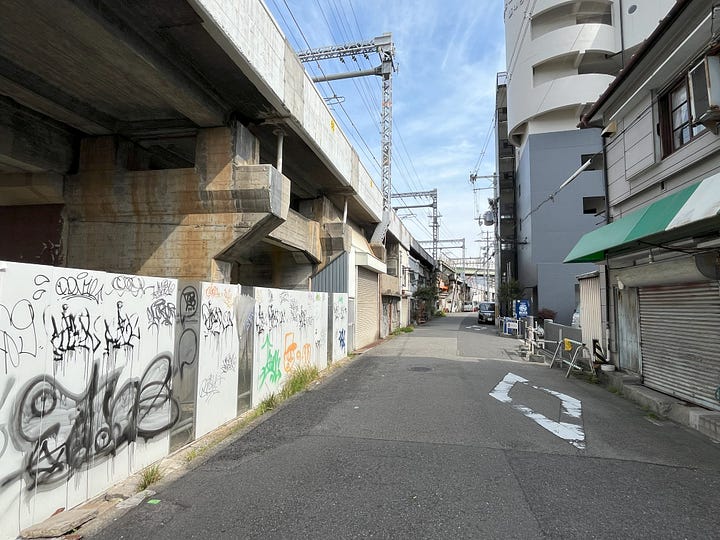
I had time after this, for a wander up to Shinsaibashi and Namba area. Again, the sheer numbers of foreign tourists struck me as the biggest change since I lived here 10 years ago. The narrow sidewalks near Namba station are being widened, which gives the area a more pleasant feel.
